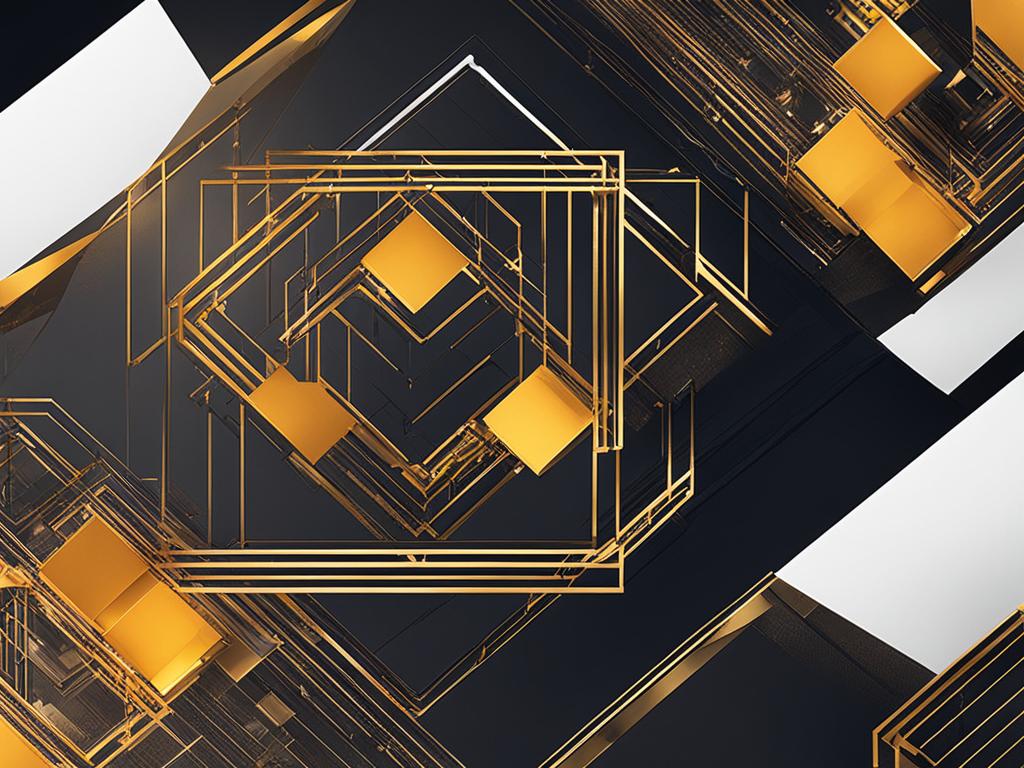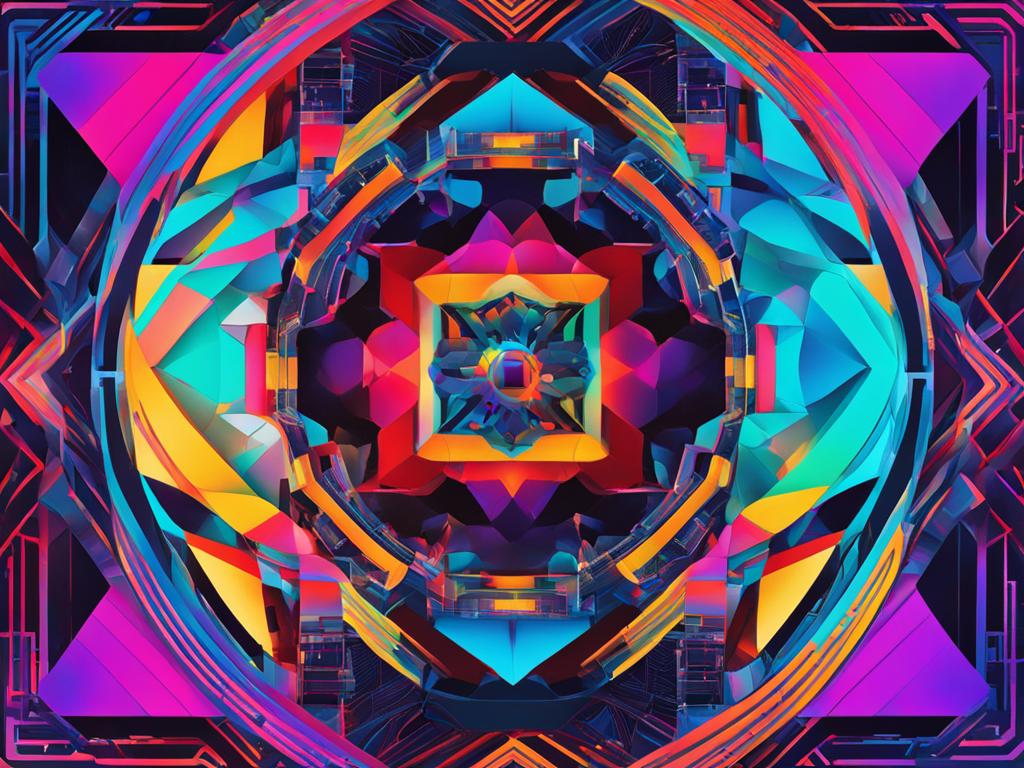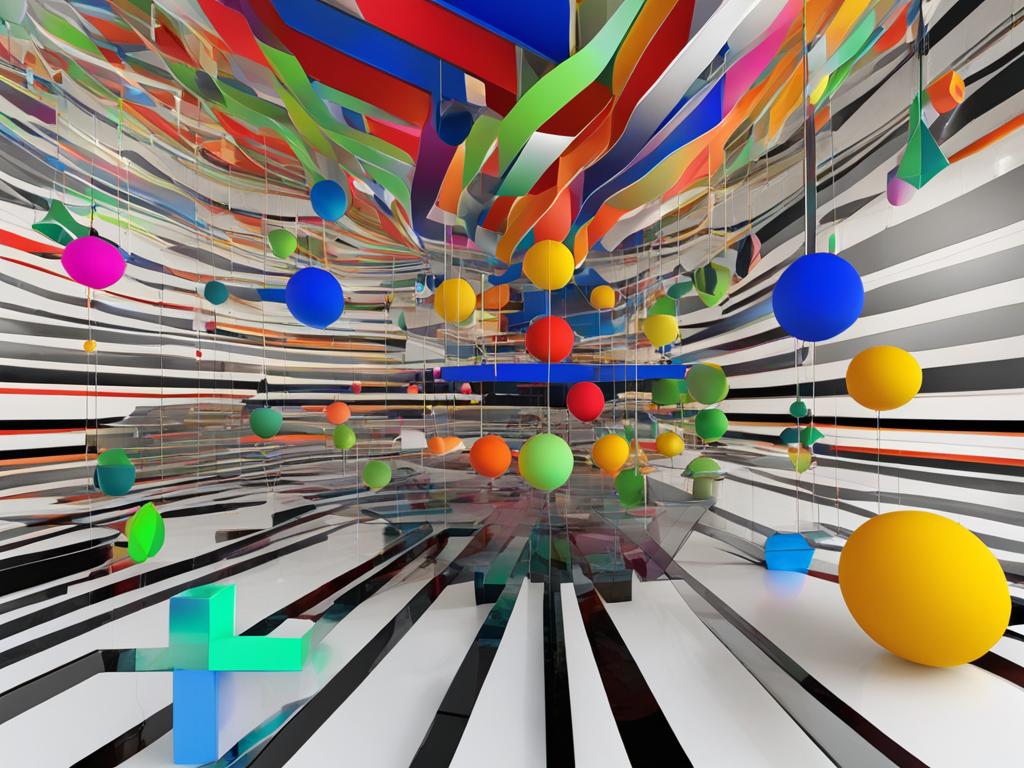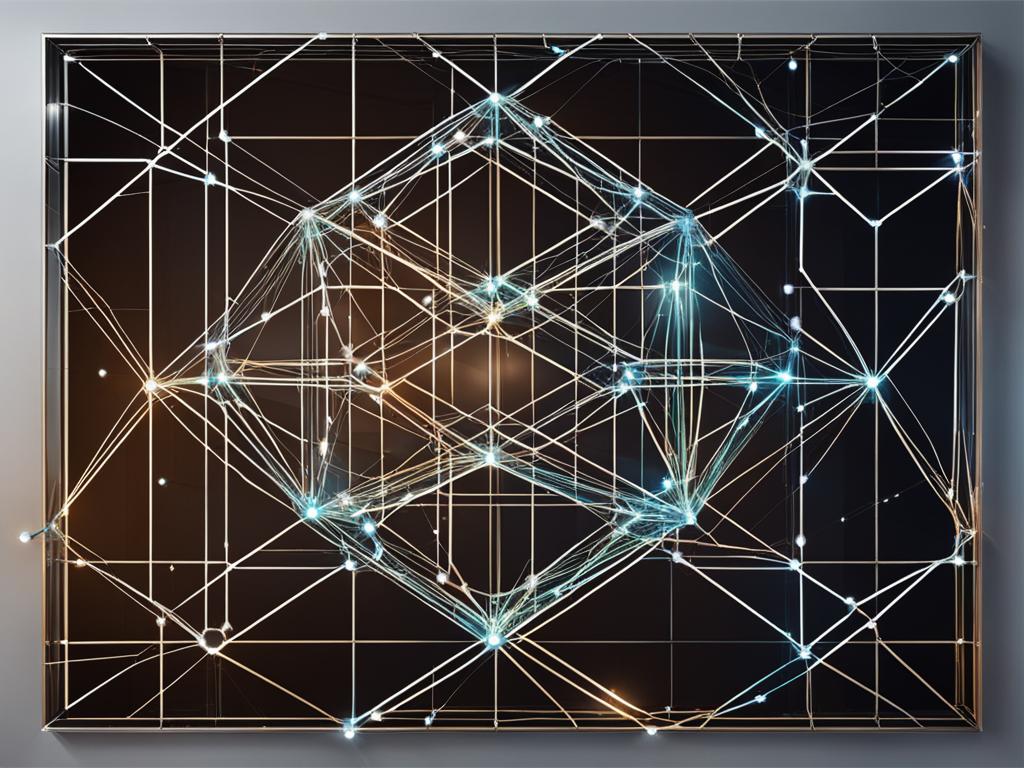As a digital artist, the rise of blockchain technology undoubtedly opened up a world of exciting possibilities to you. Blockchain art – the art created and sold using blockchain technology – has made headlines in recent years for its security, transparency, and even value as a collectible. However, as this new form of art gains popularity, it also brings forth a complex legal landscape around copyright protection, ownership, and more. In this article, I will guide you through the intricacies of blockchain art copyright and explore the ways you can secure your work in the ever-evolving blockchain art market.
We will delve into the revolutionary potential of blockchain art and its integration with Non-Fungible Tokens (NFTs). We will also discuss the role of smart contracts and the importance of registering copyright for blockchain art. Furthermore, we will examine how blockchain technology -with its unique characteristics- can ensure the authenticity of blockchain art and how to navigate the evolving market dynamics around it. Through this article, you’ll gain a comprehensive understanding of blockchain art ownership and its copyright protection mechanisms.
Blockchain Art and its Revolutionary Potential
Blockchain technology is transforming the art world, introducing new possibilities and disrupting traditional practices. Blockchain art is a unique form of art that is registered and transacted using blockchain technology. It offers a revolutionary potential to transform the way we create, buy, and sell art.
One of the key advantages of blockchain technology for art is its immutability. Once an artwork is registered and recorded on a blockchain, it cannot be altered or tampered with. This ensures that the authenticity and ownership of the artwork can be verified with certainty, preventing fraud and forgery.
In addition to immutability, blockchain art is also transparent. All transactions and ownership history are recorded on the blockchain, providing a clear and public record of the artwork’s authenticity and provenance. This transparency fosters trust and confidence among buyers and sellers.
The potential for blockchain art goes beyond just authenticity and provenance. The technology can also provide new revenue streams and opportunities for artists. With the use of digital tokens known as NFTs (Non-Fungible Tokens), artists can monetize their digital creations by selling them as unique, one-of-a-kind pieces.
The global art market is undergoing a significant shift, and blockchain technology is at the forefront of this transformation. As more artists and collectors recognize the benefits of blockchain art, we can expect to see continued growth and innovation in this space.
The Integration of NFTs in Blockchain Art
As blockchain technology continues to transform the art world, NFTs (Non-Fungible Tokens) have emerged as a critical component for establishing ownership and provenance in the digital art realm. NFTs work by creating a unique, unforgeable identifier for digital assets, such as artwork or collectibles, on the blockchain.
When an artwork is minted as an NFT, its ownership and provenance are recorded on the blockchain, allowing for a transparent and immutable record of its history. This can provide digital creators with a powerful tool for protecting their work, as well as giving collectors the assurance that they are investing in a verified, authentic piece of art.
“The use of NFTs in blockchain art has the potential to revolutionize the way we think about ownership and provenance in the digital art world.”
However, while NFTs have the potential to strengthen copyright protection for blockchain art, they also raise some legal and ethical concerns. For instance, there are questions surrounding the issue of fair use and whether NFTs can inhibit the free flow of creative expression.
Despite these challenges, the integration of NFTs in blockchain art represents a significant step forward in the establishment of a robust and trustworthy digital art market. By leveraging the power of blockchain technology and NFTs, digital creators and collectors can navigate the copyright landscape with greater confidence and transparency.
Copyright Protection for Blockchain Art
When it comes to blockchain art, copyright protection is a critical concern for creators and collectors alike. The decentralized nature of blockchain technology presents new challenges and opportunities in the realm of copyright, which require an innovative approach to ensure the protection of intellectual property.
Securing copyright for blockchain art involves two main challenges: ownership and infringement. While blockchain technology allows for a transparent and immutable record of ownership, it also requires the registration and recognition of copyright protection by legal systems.
Smart contracts are one potential solution to this challenge. Smart contracts are self-executing contracts with the terms of the agreement between buyer and seller being directly written into lines of code. They enable automated transactions and simplify the licensing process for artists, copyright holders, and collectors.
Another key aspect of securing copyright for blockchain art is registering the work with the appropriate authorities. While the decentralized nature of blockchain provides a secure and permanent record of ownership, it does not replace the need for traditional copyright registration processes. By registering their work with relevant authorities, creators can ensure that they are legally protected and reduce the risk of infringement.
| Benefits of Registering Copyright for Blockchain Art | Challenges of Registering Copyright for Blockchain Art |
|---|---|
|
|
In conclusion, securing copyright for blockchain art is a complex but necessary process. By leveraging blockchain technology and innovative legal solutions such as smart contracts and traditional copyright registration processes, creators and collectors can protect their intellectual property and establish a foundation for the future of digital art.
Ensuring Authenticity in Blockchain Art
One of the key advantages of blockchain technology in the art world is its ability to ensure the authenticity of digital artworks. Traditional art authentication methods rely on physical inspections and documentation, making it difficult to establish authenticity in digital art, which can be easily duplicated and manipulated. However, blockchain technology offers a solution by providing a tamper-proof and transparent record of an artwork’s creation and ownership history.
To verify the integrity of digital artworks, blockchain platforms use digital signatures and cryptographic techniques. Digital signatures are unique codes that identify the creator of an artwork and ensure that any modifications to the artwork are tracked and accounted for. Cryptographic techniques encrypt the artwork’s data to protect it from tampering or unauthorized access.
Decentralized platforms play a vital role in establishing trust and authenticity in the blockchain art market. These platforms provide a peer-to-peer network for buying, selling, and trading artworks, which eliminates the need for intermediaries and reduces the risk of fraud and misrepresentation. By creating a transparent and secure marketplace, decentralized platforms help to ensure the authenticity of blockchain art and enable digital creators to sell their works with confidence.
The Role of Smart Contracts in Art Copyright
The use of smart contracts has gained traction in the blockchain art world due to its potential to automate and manage copyright licensing, royalties, and resale rights. Smart contracts are self-executing digital contracts that automatically execute the terms of an agreement when certain conditions are met.
By leveraging smart contracts for art copyright, digital creators can establish clear and transparent terms for the use and distribution of their artwork. These contracts can ensure that artists receive proper compensation and recognition for their work, while also providing greater security for buyers and collectors.
One of the benefits of smart contracts is their ability to provide greater accuracy and efficiency in copyright management. These contracts can automatically distribute royalties to artists whenever their work is sold, eliminating the need for intermediaries or third-party rights holders.
However, there are also challenges associated with the use of smart contracts for art copyright. For instance, the complexity of copyright law and the need for legal expertise may make it challenging to draft effective contracts. Additionally, there are concerns about the potential for smart contracts to be subject to bugs or vulnerabilities.
Despite these challenges, the potential benefits of smart contracts for art copyright are significant. As the use of blockchain technology and NFTs continues to expand in the art world, smart contracts offer a promising solution for managing and protecting digital art ownership and distribution.
Blockchain Art Registration and Provenance
Blockchain technology has the potential to create a transparent and immutable record of an artwork’s history, from creation to ownership transfers. This record, also known as provenance, is critical in ensuring the authenticity and value of artwork. By leveraging blockchain technology, artists can establish a clear ownership trail that cannot be altered or tampered with.
Provenance information includes the artist’s name, title of the artwork, creation date, and any edition or series details. It can also include information on previous owners and sale prices. All of this information is recorded on the blockchain, making it easily accessible to anyone with access to the network.
One of the most significant advantages of using blockchain technology for art registration is the ability to create a decentralized database of information. This database can be accessed and maintained by anyone, making it a truly global resource for provenance research and authentication. Additionally, blockchain technology provides a secure and transparent system for registering and transferring ownership of artwork.
While there are many benefits to using blockchain technology for art registration and provenance, there are also challenges that must be addressed. For example, ensuring accuracy and authenticity of information is critical. Additionally, the use of blockchain technology in provenance research requires a level of technical knowledge and expertise that is not always available.
Despite these challenges, the potential for blockchain technology to revolutionize art registration and provenance is undeniable. By leveraging the power of the blockchain, artists can establish clear ownership and provenance records that are accessible to a global audience.
The Evolving Market Dynamics of Blockchain Art
The intersection of blockchain and art has created a new market for digital creations that is rapidly evolving. As more artists and collectors become interested in blockchain art, the market dynamics are shifting, posing both challenges and opportunities.
One trend is the growing interest in digital art, which has escalated due to the unique features of blockchain technology. It offers a safe and transparent way for art collectors and enthusiasts to buy and sell art. This interest in digital art also challenges traditional art market structures and the traditional conceptions of art ownership.
However, with the rise of blockchain art, there are also challenges and new concerns regarding authenticity, security, and trust. While blockchain technology can provide a transparent and immutable record of art ownership, it also opens up questions about how provenance is tracked and how owners and creators are compensated in this new environment.
As blockchain art gains broader acceptance and recognition, it is becoming increasingly clear that the intersection of blockchain technology and the art world is still evolving and will continue to do so for years to come. Thus, it is vital for digital creators to stay informed of the market dynamics to capitalize on the emerging opportunities in this space.
“The emergence of blockchain art has disrupted traditional market structures and challenged established notions of art ownership and provenance. The evolving market dynamics of blockchain art are creating new opportunities and challenges for digital creators, who must stay well-informed and flexible to succeed in this space.”
Licensing Art on the Blockchain
Art licensing is an essential aspect of protecting an artist’s work and ensuring that they receive fair compensation for their creations. The blockchain provides a robust and secure system for licensing art, allowing artists to retain more control over their work and streamline the licensing process.
By leveraging blockchain technology, artists can create smart contracts that automate the licensing process, from granting specific usage rights to tracking payments and royalties. These smart contracts are transparent, efficient, and tamper-proof, providing artists with greater peace of mind and ensuring that their work is used ethically.
Furthermore, the use of blockchain technology in art licensing has the potential to revolutionize the broader art industry. By facilitating the licensing of art in a secure and transparent manner, the blockchain can help establish a new standard for fair compensation and ethical usage rights.
“Blockchain technology has the potential to bring greater transparency and fairness to the art world, from licensing to ownership and beyond.”
As the art world continues to evolve and adapt to new technologies, it is critical that artists and industry professionals stay informed and embrace the potential of blockchain technology. By doing so, we can create a more accessible, transparent, and equitable art market, one that benefits artists and art lovers alike.
Copyright Challenges and Legal Considerations for Blockchain Art
While blockchain technology offers many advantages for digital creators, it also presents complex copyright challenges and legal considerations. As artworks on the blockchain can be easily distributed, reproduced, and modified, it is crucial for creators to understand the intricacies of copyright ownership, fair use, and infringement in the digital art space.
Digital art copyright on the blockchain can be difficult to establish and enforce, as ownership can be distributed across various parties, including artists, collectors, and investors. Smart contracts can help automate copyright licensing and ensure appropriate compensation for creators. However, it is important to note that smart contracts are not legal documents, and may not be recognized as such in court.
Another legal consideration is fair use, which allows for the limited use of copyrighted material without permission for purposes such as criticism, commentary, news reporting, teaching, scholarship, and research. As blockchain art blurs the line between original and appropriated works, determining fair use can be a complex and subjective process.
Furthermore, infringement of blockchain art copyright can occur in various ways, including unauthorized reproduction, distribution, and modification. As the legal landscape for blockchain art is still emerging, it is essential for creators to stay informed of legal developments and protect their work through registration and other legal means.
“As blockchain technology evolves, so too will the legal and regulatory frameworks surrounding it. It is important for creators to stay informed of these developments and take proactive steps to protect their intellectual property.”
Table: Key Legal Considerations for Blockchain Art Copyright
| Issue | Key Considerations |
|---|---|
| Ownership | Distributed ownership, smart contract limitations |
| Fair use | Subjectivity, appropriation vs. originality |
| Infringement | Unauthorized reproduction, distribution, modification |
As the use of blockchain technology in the art world continues to grow, it is important for digital creators to be aware of the copyright challenges and legal considerations specific to this field. By staying informed and taking proactive steps to protect their intellectual property, creators can harness the full potential of blockchain art.
Future Directions and Innovations in Blockchain Art Copyright
As blockchain technology continues to mature and evolve, so too will its impact on the art world and copyright protection. Ongoing research and development efforts are focused on finding new and innovative solutions for the unique challenges posed by blockchain art.
One promising area of development is the use of advanced cryptographic techniques to enhance the security and immutability of blockchain art. This could include the use of homomorphic hashing, digital watermarks, and other tools to ensure that digital artwork remains secure and tamper-proof.
Another area of interest is the development of decentralized platforms for the creation, purchase, and sale of blockchain art. These platforms could leverage blockchain technology to create more transparent, efficient, and equitable marketplaces for digital creators and collectors.
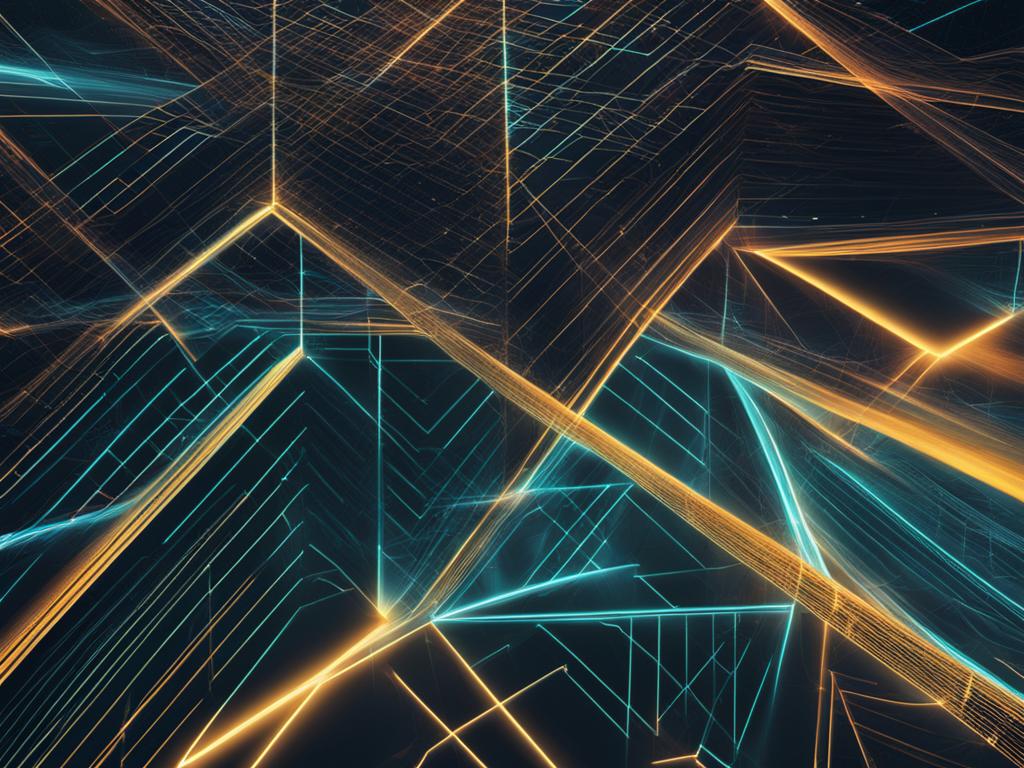
Emerging technologies like machine learning and artificial intelligence are also being explored for their potential to enhance copyright protection and provenance in the blockchain art world. These tools could help to identify instances of infringement or unauthorized use of copyrighted artwork, as well as assist with the management and tracking of licensing agreements.
Looking ahead, it’s clear that the intersection of blockchain technology and art copyright will continue to be an area of significant innovation and disruption. By staying up-to-date with the latest trends and developments in this fast-evolving space, digital creators can position themselves for success and unlock new opportunities in the world of blockchain art.
Conclusion
In conclusion, blockchain art presents an exciting new frontier for digital creators, offering unique opportunities for ownership, licensing, and provenance. However, navigating the copyright landscape for blockchain art is complex and requires a thorough understanding of the intersection of blockchain technology and copyright law.
By leveraging the potential of blockchain technology and understanding the legal implications of copyright for digital art, artists can ensure the copyright protection of their work and unlock new possibilities in the evolving landscape of digital art.
As the market for blockchain art continues to grow and evolve, it will be important for digital creators to stay up-to-date on emerging trends, legal considerations, and technological innovations.
At the end of the day, blockchain art has the potential to transform the art world and revolutionize the way we create, buy, and sell art. By embracing this new frontier, artists can seize the opportunities it presents and shape the future of digital art with their creativity, innovation, and vision.
So, let’s embrace the potential of blockchain art and work together to ensure the copyright protection of this exciting new genre of art.

